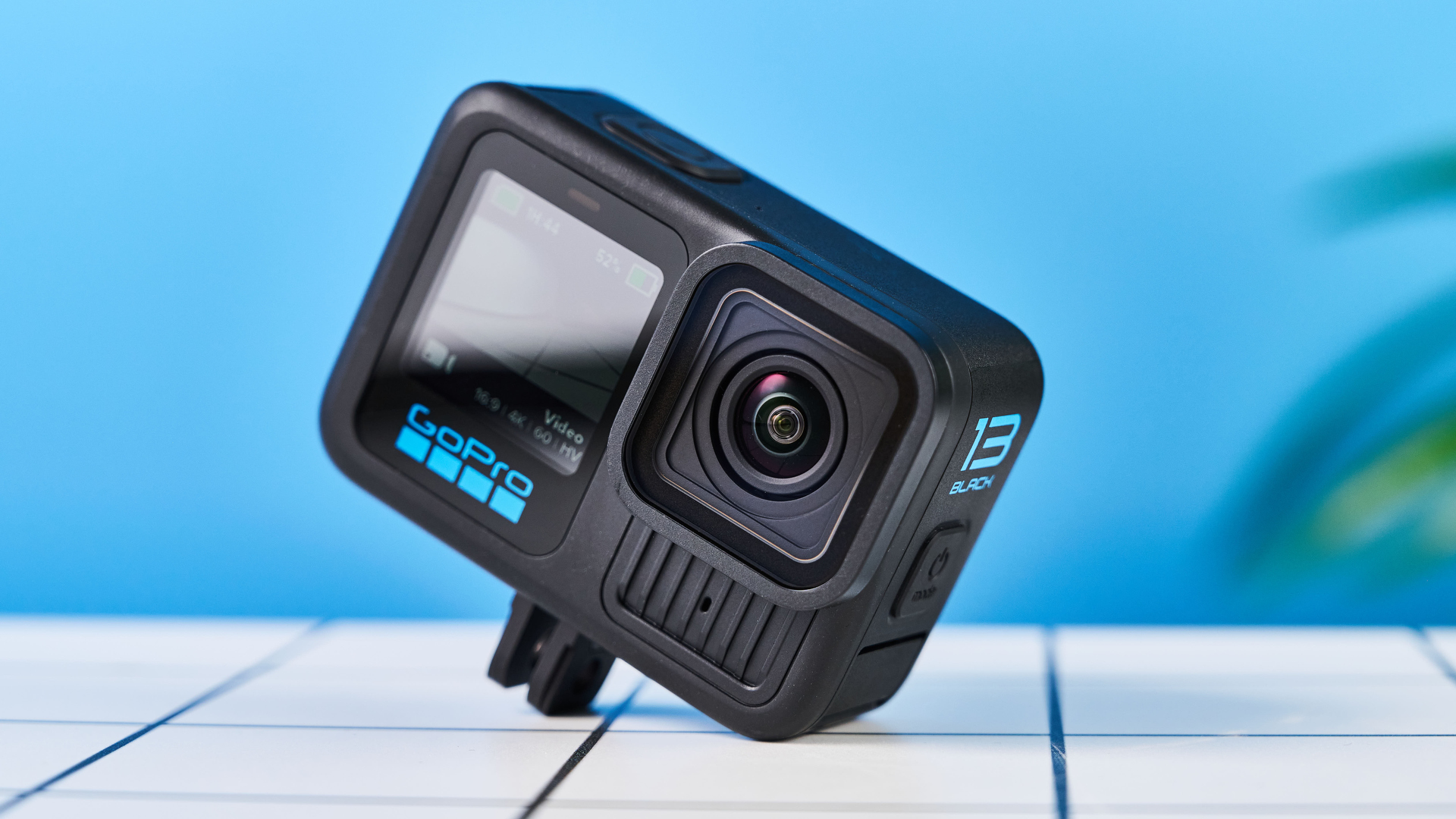
With the Hero13 Black, the reigning champ GoPro enters the arena yet again to defend its title as the best action camera. The challengers: none other than the fabulous DJI Osmo Action 5 Pro (OA5 Pro) and the new Insta360 Ace Pro 2.
Historically, GoPro has rarely had to strain to keep its Hero Black line ahead (if only marginally) of DJI and Insta360. There’s the weight of GoPro’s brand for a start: it’s not uncommon to hear “GoPro” and “action camera” used interchangeably, although I always rebuke any blasphemers for doing so in my presence. There’s also the fact that the Hero Black line is the original winning formula — why meddle with what works? And so, in much the same way as its predecessor, the GoPro Hero12 Black, was but a modest modification of the Hero11 Black, so is the Hero13 Black another demonstration of evolution, not revolution.
The thing is, with this latest crop of action cameras, the title belt has never been so hotly contested. With unbeatable waterproofing and pro features from DJI, plus 8K recording from Insta360, is it really enough for a GoPro to just extend its Lens Mod range, slap on a magnetic mount, tweak the battery and call it a day? Does GoPro still have what it takes to maintain its record? Find out in this GoPro Hero13 Black review.
GoPro Hero13 Black review: Specs
GoPro Hero13 Black review: Price & availability
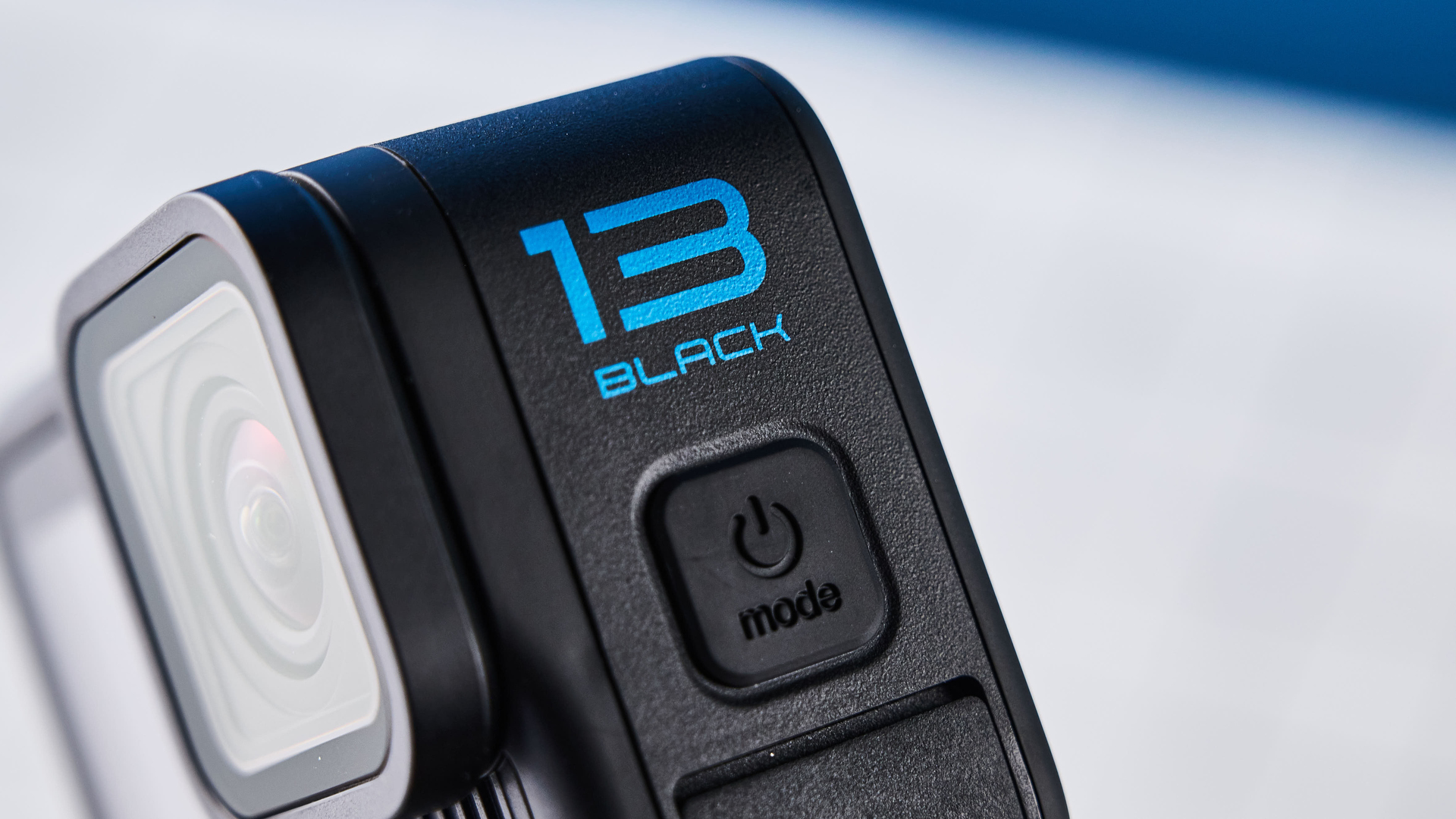
The GoPro Hero13 Black starts at $399 at Amazon U.S. and GoPro, $50 more than the DJI Osmo Action 5 Pro ($349) and the same price as the Insta360 Ace Pro 2 (which I’m testing at the time of writing).
GoPro hasn’t raised the price over the Hero12 Black, which also launched at $399. That’s good, although not something to dole out too much kudos for — that’d be like thanking someone for not slapping you. The Hero13 Black hasn’t received all that many serious performance updates over its predecessor: there are few new shooting modes and boosted battery capacity, but for almost all intents and purposes, it’s the same camera. The biggest performance feature is the expansion of lens mods through a new mount, but those lens mods come separately and will each cost you a pretty penny.
By contrast, DJI has dropped the Osmo Action 5 Pro’s price by $50 over the Osmo Action 4, despite major internal upgrades, including the sensor (and therefore stabilization) and waterproofing. Likewise, Insta360 has dropped the Ace Pro 2’s launch price by $50 from the (frankly overpriced) Insta360 Ace Pro, which launched at $449.
GoPro Hero13 Black review: Design & controls
The GoPro Hero13 Black has received very modest design changes over the Hero12 Black, sporting an altered lens mount (more on that later), a slightly different frontal display surround and, well, that’s about it.
Displays & dimensions
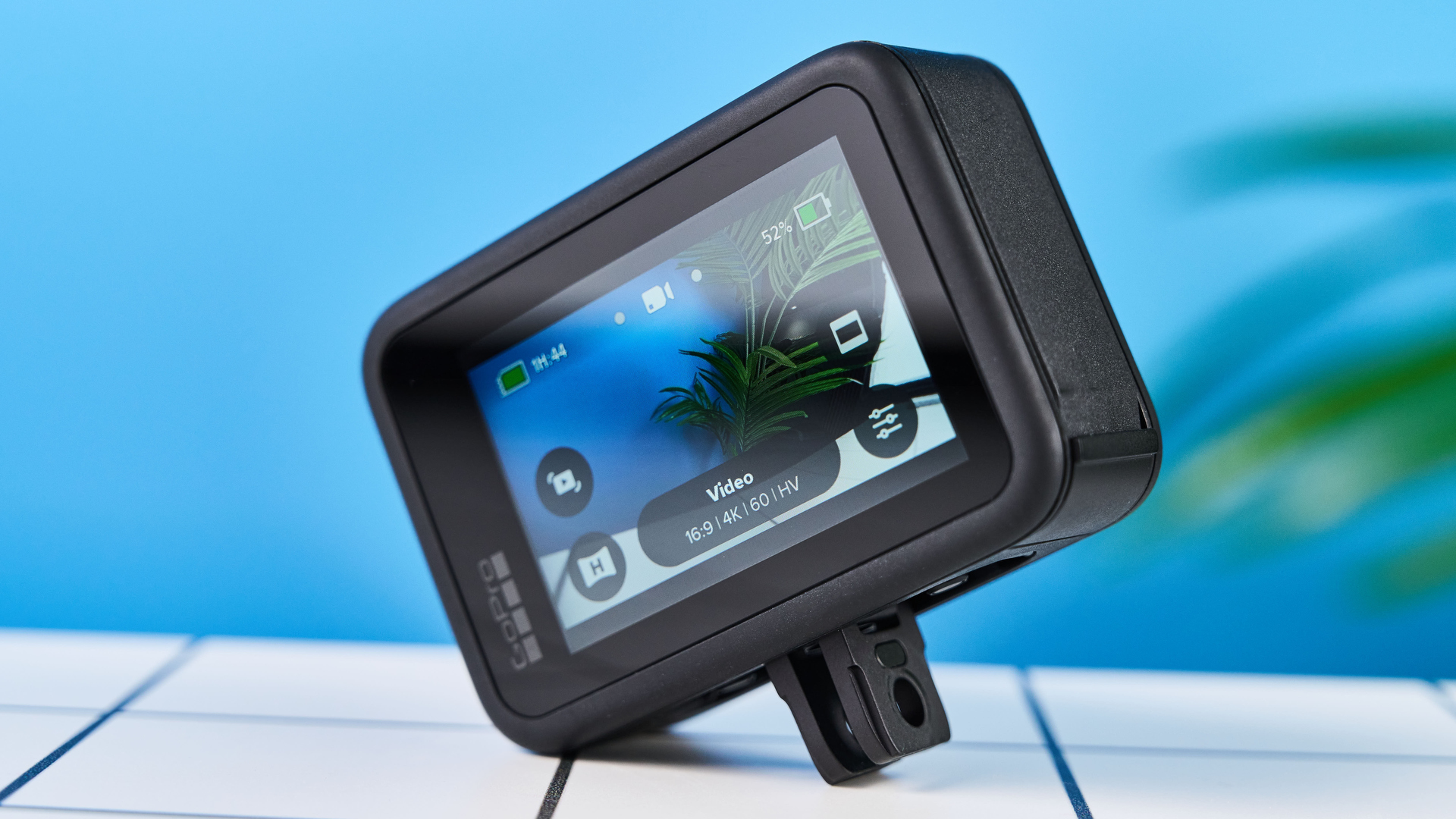
The 1.4-inch front and 2.27-inch rear displays are exactly the same as on the GoProHero12 Black, and are both LCD touch screens that are bright, responsive and large enough for their respective purposes. Both pale in comparison to the updated OLED displays on the Osmo Action 5 Pro, which are brighter, crisper, larger and more spacious.
Likewise, the Hero13 Black’s dimensions stay the same as the Hero12 Black at 2.8 x 2 x 1.32 inches and 5.4 ounces, making it larger and heavier than the OA5 Pro, although by no means as cumbersome as the chunky Insta360 Ace Pro 2. Build quality is, as can be expected from GoPro, fantastic — second to none and equal to both DJI and Insta360.
Controls & connectivity
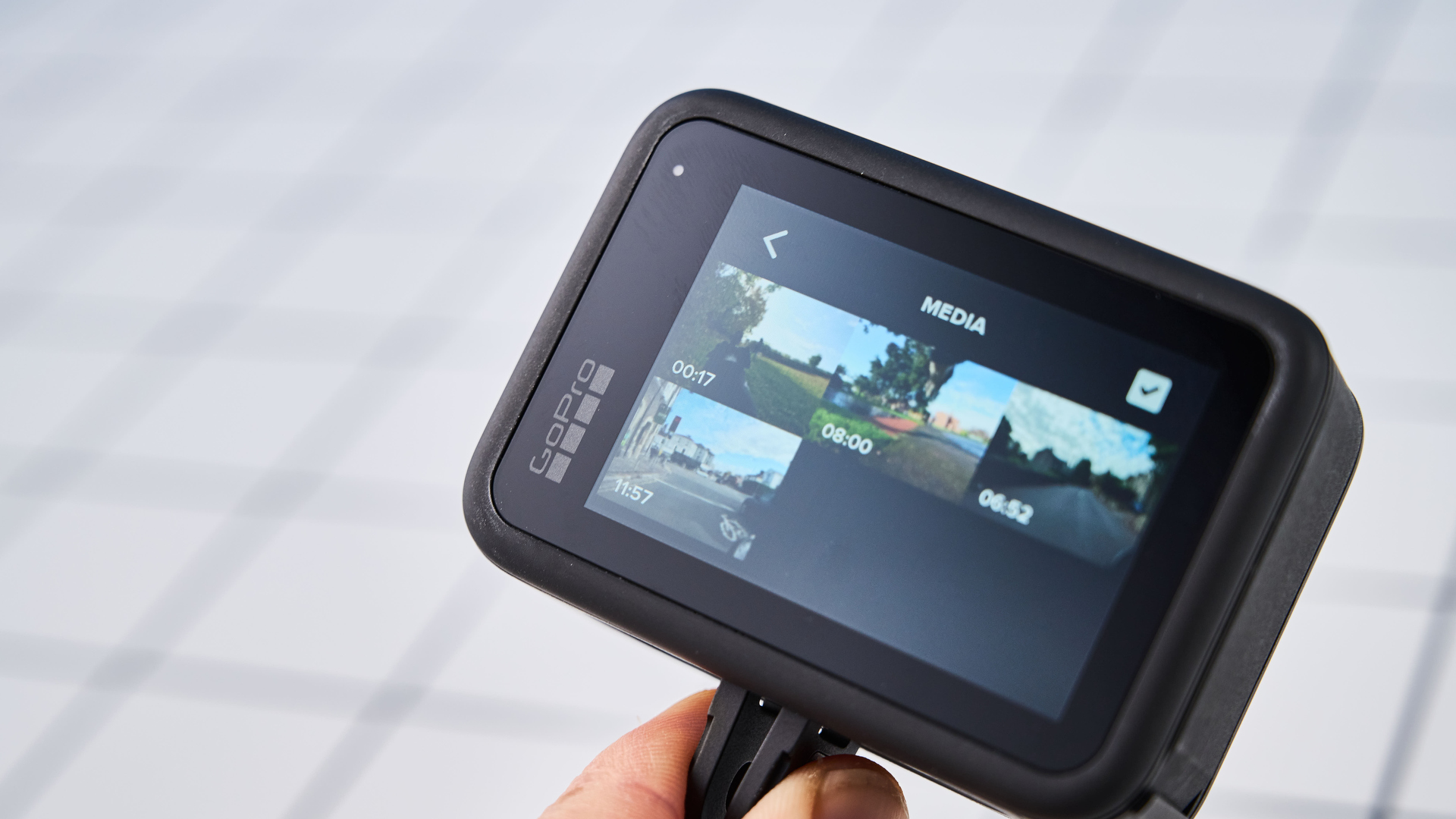
Most features and controls are tweaked via the menu on the rear screen. GoPro’s menu system is sensibly laid out and can toggle quickly between an “Easy” simplified mode and an in-depth “Pro” mode, which gives lots of creative manual control. I find GoPro’s menu navigation frustrating at times: going back often requires scrolling up to the top of the page to hit a back arrow, and while doing so it’s super easy to accidentally knock a setting, especially while wearing gloves. On one occasion, I accidentally toggled the camera from 4K to 2.7K recording; on another, I managed to accidentally change the shooting mode to TimeWarp, resulting in the time-lapsed dog cam footage below (as my mother often says about me: a very happy accident). I much prefer Insta360’s menu system, where I never have such issues.
Of further annoyance is the USB-C port, which as with previous models is underneath the battery hatch. If you’re hooking up accessories, you’ll need to remove the battery hatch, exposing the battery and compromising waterproofing. As I found on my GoPro Hero12 Black, over time, batteries don’t tend to sit so snugly, resulting in unwanted power downs when there’s no hatch keeping everything in place. GoPro has solved this previously with a USB-C pass-through door accessory for the Hero11 Mini, but doesn’t appear to offer one currently for the Hero Black line. Of course, GoPro wants you to buy its various USB-C accessory mods instead, which encase the camera and hold the battery in place.
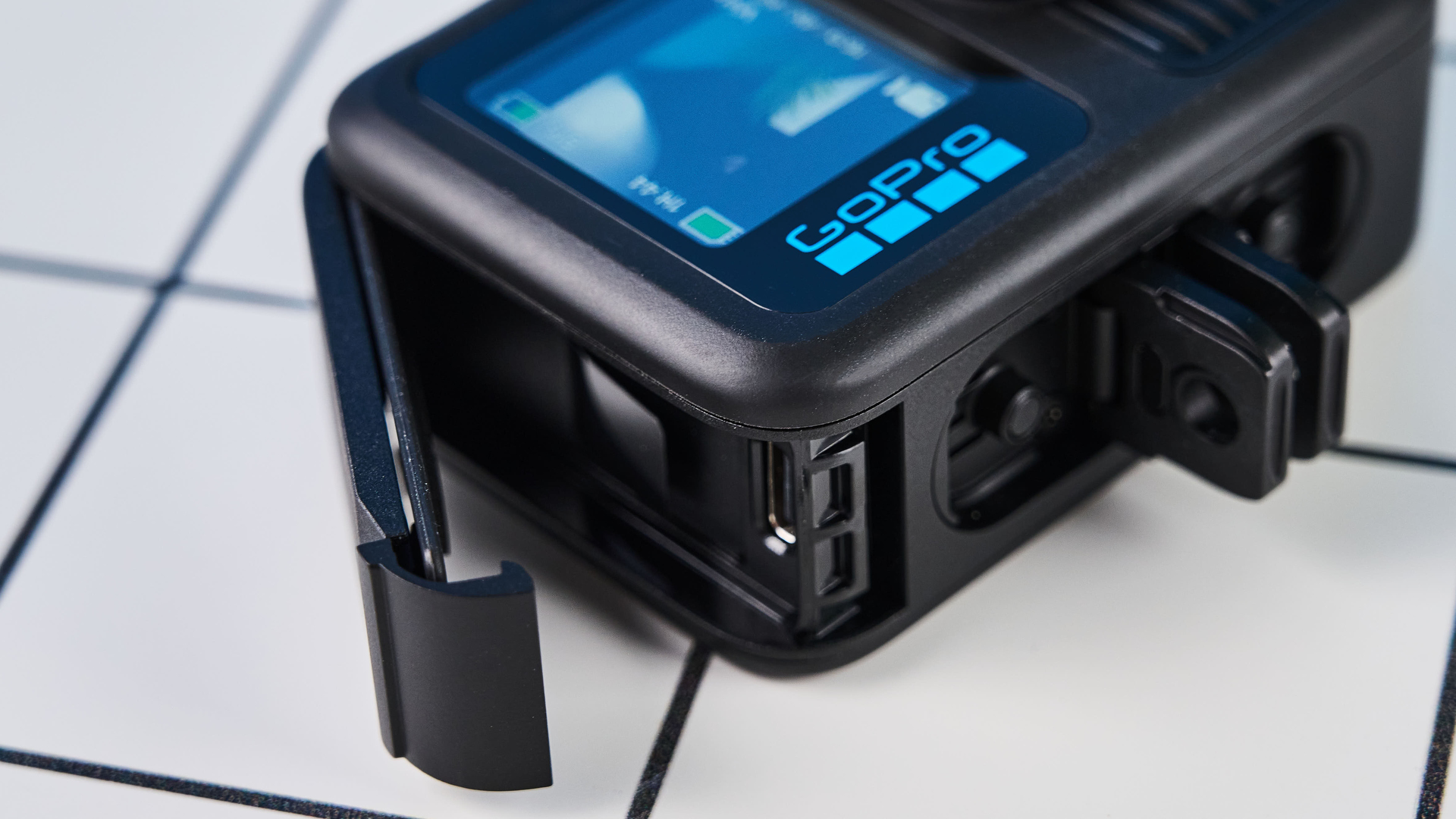
GoPro has finally entered the world of magnetic mounting, facilitating quick release mounts and rapid changeovers between mounting setups. This is a feature that both Insta360 and DJI have had for a while. I like that GoPro has managed to work this into its existing flip-out fork mount, though, keeping both options available.
Waterproofing
Waterproofing hasn’t changed from the Hero12 Black, at 33 feet (10 meters). By contrast, DJI has increased waterproofing from 59 feet in the OA4 to 65 feet in the OA5 Pro. For water-based activities, it’s DJI all the way.
GoPro Hero13 Black review: Autofocus
The GoPro Hero13 Black’s autofocus is fine for non-vlogging footage, prioritizing the background and wider scenery, as you can see in the dog cam and stabilization footage later in the article. If you’re moto-vlogging or shooting extreme sports, this is what you want.
For vlogging, I found the autofocus a little lacking. As you can see in the test footage above, the camera maintains focus on the background as I walk up to it and take up the center of the frame. Even after standing in shot for a couple of seconds, the focus is still on the background, as the mannequins’ heads are sharper than my face. If you’re vlogging, the subject tracking feature DJI has added to the OA5 Pro and DJI Osmo Pocket 3 will suit you much better.
GoPro Hero13 Black review: Stabilization
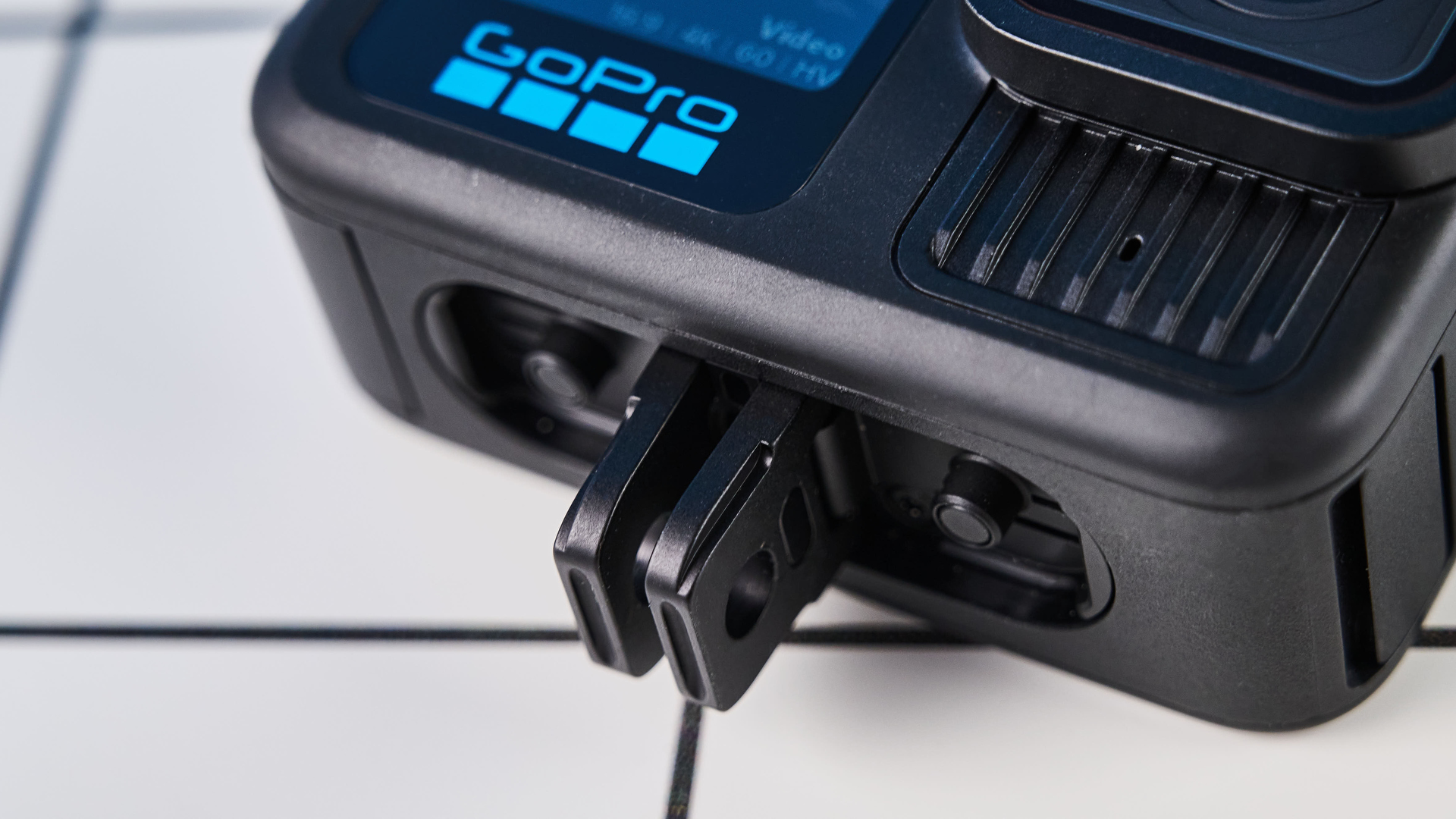
GoPro’s HyperSmooth stabilization system is excellent. In the slow speed motorcycle footage below, shot in the standard HyperSmooth stabilization mode, the footage is very smooth despite the extremely bumpy ground. You can see how much the bike is shaking by looking at the speedometer in the bottom right.
Before now, GoPro and Insta360 have boasted comparably ferocious autofocus systems, with DJI dragging a little behind. That has all changed with the OA5 Pro, which has noticeably improved stabilization, although GoPro’s HyperSmooth is still a whisker ahead of the pack.
GoPro Hero13 Black review: Video performance
Video performance is naturally the most important aspect of any action camera, and unsurprisingly the Hero13 Black doesn’t disappoint. On offer are 5.3K/60p and 4K/120p for slow motion footage, although the camera also introduces a slow motion burst feature, which can shoot 720p footage at frames rates of up to 400fps for super slow motion content.
Now, most people can pretty much ignore that headline 5.3K figure, not to mention the Ace Pro 2’s 8K top res — at least while YouTube’s maximum upload resolution is 4K. However, if you’re a professional wanting a b-cam or vlogging camera, that extra resolution will enable oversampled (in post) 4K footage. The Osmo Action 5 Pro tops out at 4K, which is a disappointment, but for the masses is absolutely fine and worth the $50 saving. Like the OA5 Pro, the Hero13 Black now has HLG and Log gamma profiles to capture wider dynamic range, plus 10-bit for a wider color gamut when shooting 4K and upwards — both cameras are therefore relatively equal in terms of the professional recording features they offer.
The GoPro’s 4K footage looks fantastic, and is nice and sharp in the center until wide angle barrel distortion naturally starts to warp the peripheries. Colors are rich but natural in Standard color mode, although the walking footage above is shot in Vivid, which is nice and vibrant. The standard lens will shoot five fields of view (FoV), from a fixed linear FoV of around 30mm down to an ultra wide HyperView of 12mm (full frame equivalent). Below you can see how the default Wide and ultra-wide HyperView look. The video shot for the autofocus section above uses Linear, for less barrel distortion.

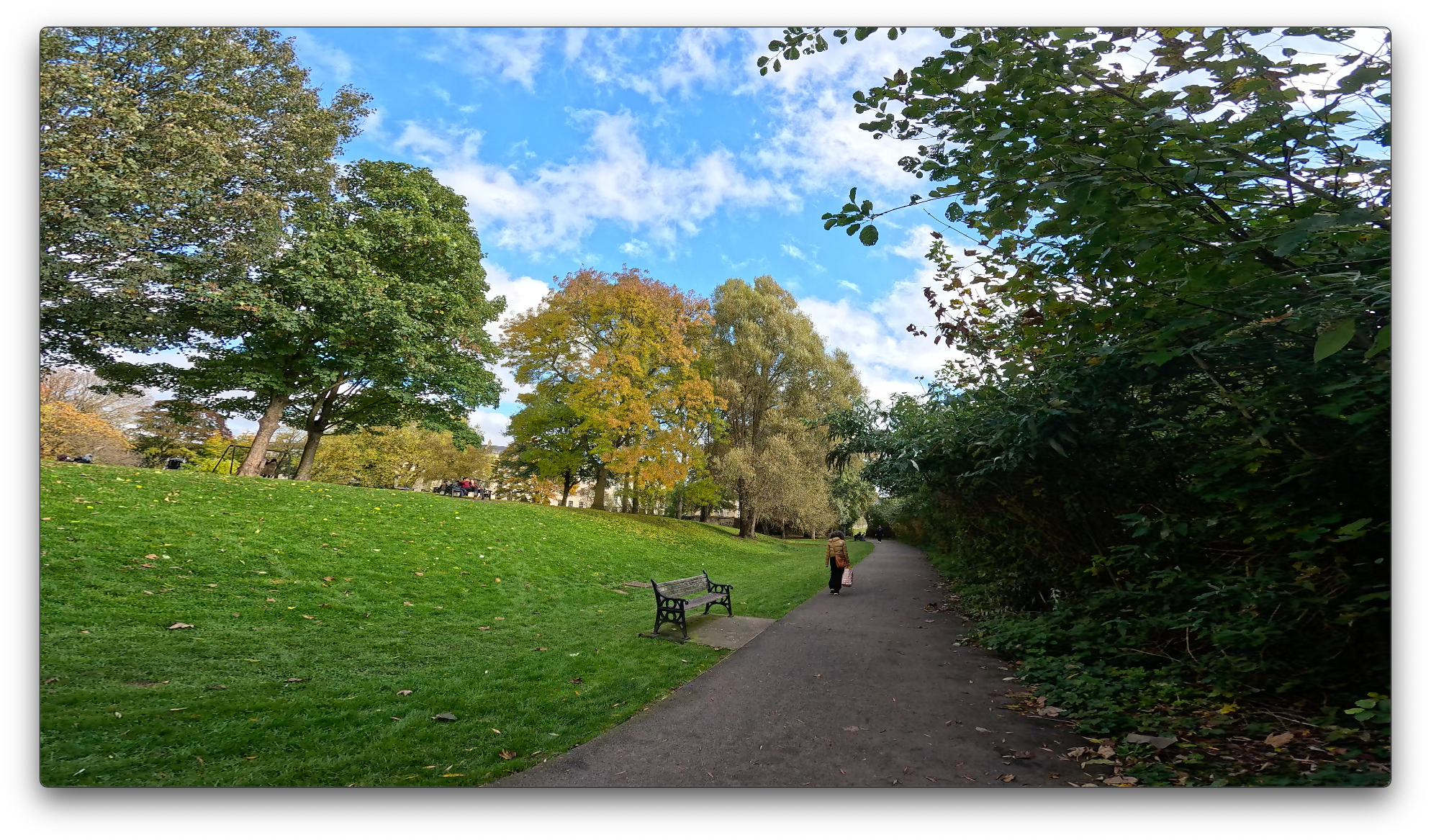
Low light performance is as you’d expect from the Hero13 Black’s 1/1.9-inch sensor (the same as in the Hero12 Black) — sensors in action cameras are small and therefore don’t handle low light as well as, say, one of the best mirrorless cameras with a larger sensor. As you can see by the low light test footage of the Marshall amp below, with denoising set to high, the camera has had to smooth out a lot of noise, resulting in a blurry image.
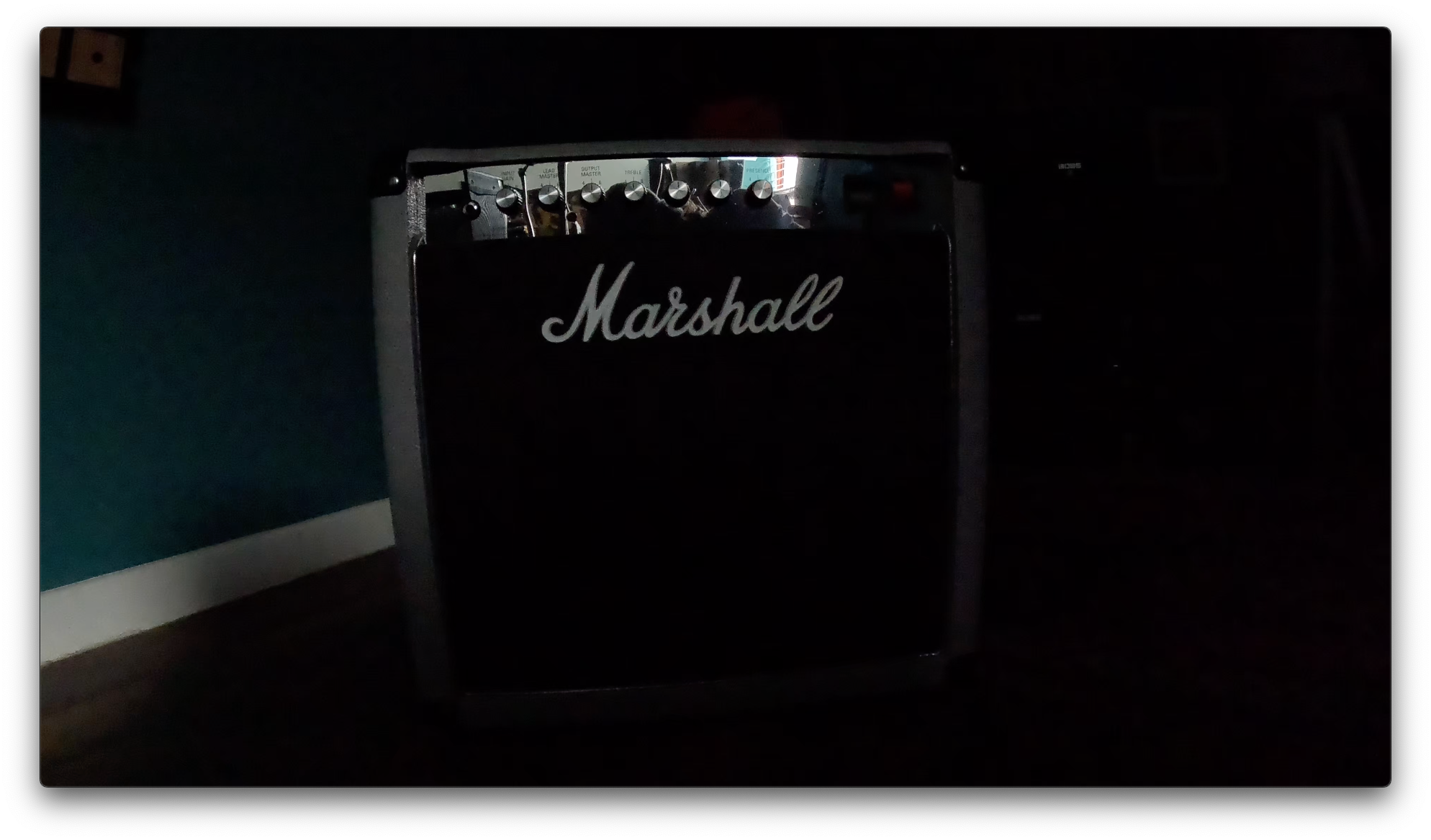
The fine text on the amp’s control panel is still visible, but it isn’t a good looking picture. The OA5 Pro, with its 1/1.3-inch sensor, performed marginally better in similar conditions, yielding a brighter and slightly cleaner (although still rather unpleasant) image.
Timelapse

Making a return from the Hero12 Black are GoPro’s fun timelapse modes. There are modes for capturing star trails, light painting and vehicle lights. These all use long exposures to paint light trails, producing both a photo and video. You can see the light painting video demonstrated in the GIF above and the resulting photo below — they're pretty rad.
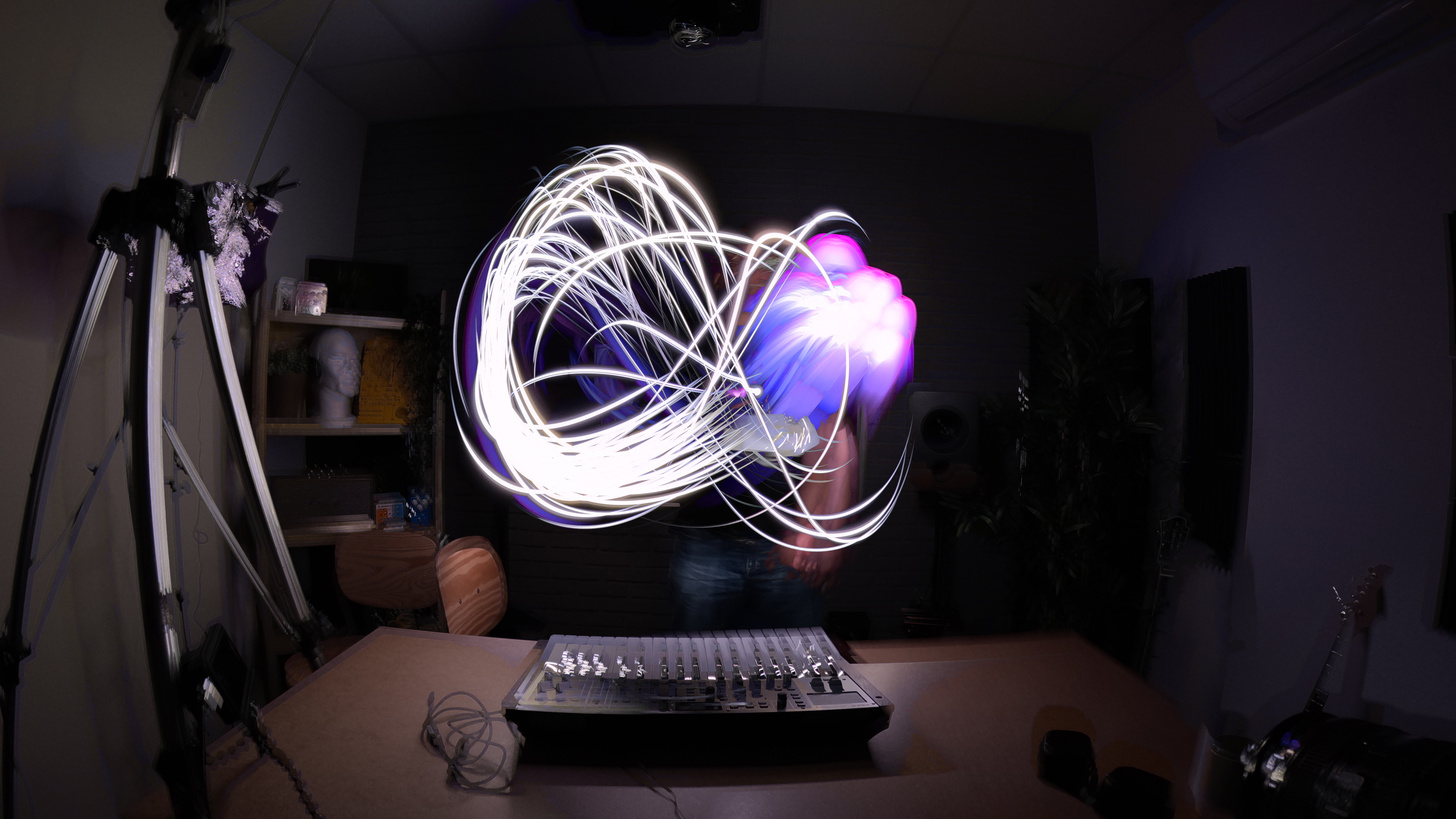
There are also traditional timelapse and nightlapse modes, plus TimeWarp, which is essentially just a timelapse with image stabilization applied. I accidentally used this on a dog walk in the footage below, and was delighted with the results: super stable timelapse footage of Luna’s walk through the fields!
Both the OA5 Pro and Ace Pro 2 offer timelapse modes, with the Ace Pro 2 also offering a star trail mode. Neither make it as easy as the GoPro to capture as many specific types of light trails, though. The OA5 Pro is the only of the three to also offer a hyperlapse mode.
Lens mods
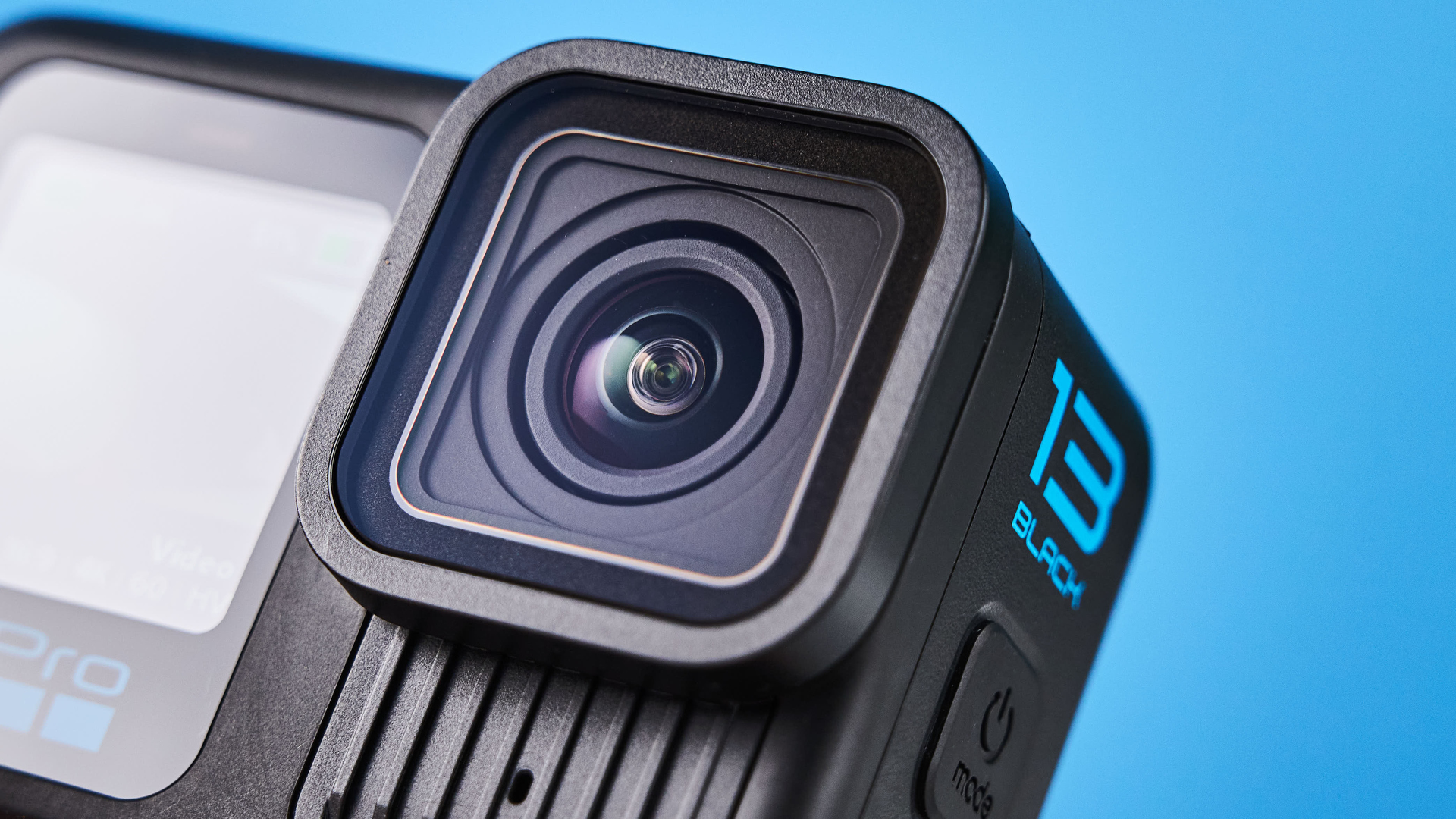
The Hero13 Black puts on a fairly respectable display audio-wise. As you can hear in the motorcycle audio capture below, shot in wind reduction mode, the camera’s internal microphone has done an acceptable job at reducing wind buffeting, and has captured some of the deeper tones of the bike’s exhaust.
It isn’t great, so if audio is important to you, it’s worth investing in a 3.5mm adapter and one of the best microphones. The DJI Osmo Action 5 Pro features better internal mics (it has 3, although they’re still no substitute for an external setup), as well as wireless hookup to DJI’s fantastic mics like the DJI Mic 2.
One feature I love on the GoPro, though, is its raw audio recording, which will store a raw .wav audio track alongside video, allowing you to edit audio separately and providing higher resolution files for more flexibility in post.
GoPro Hero13 Black review: Audio performance
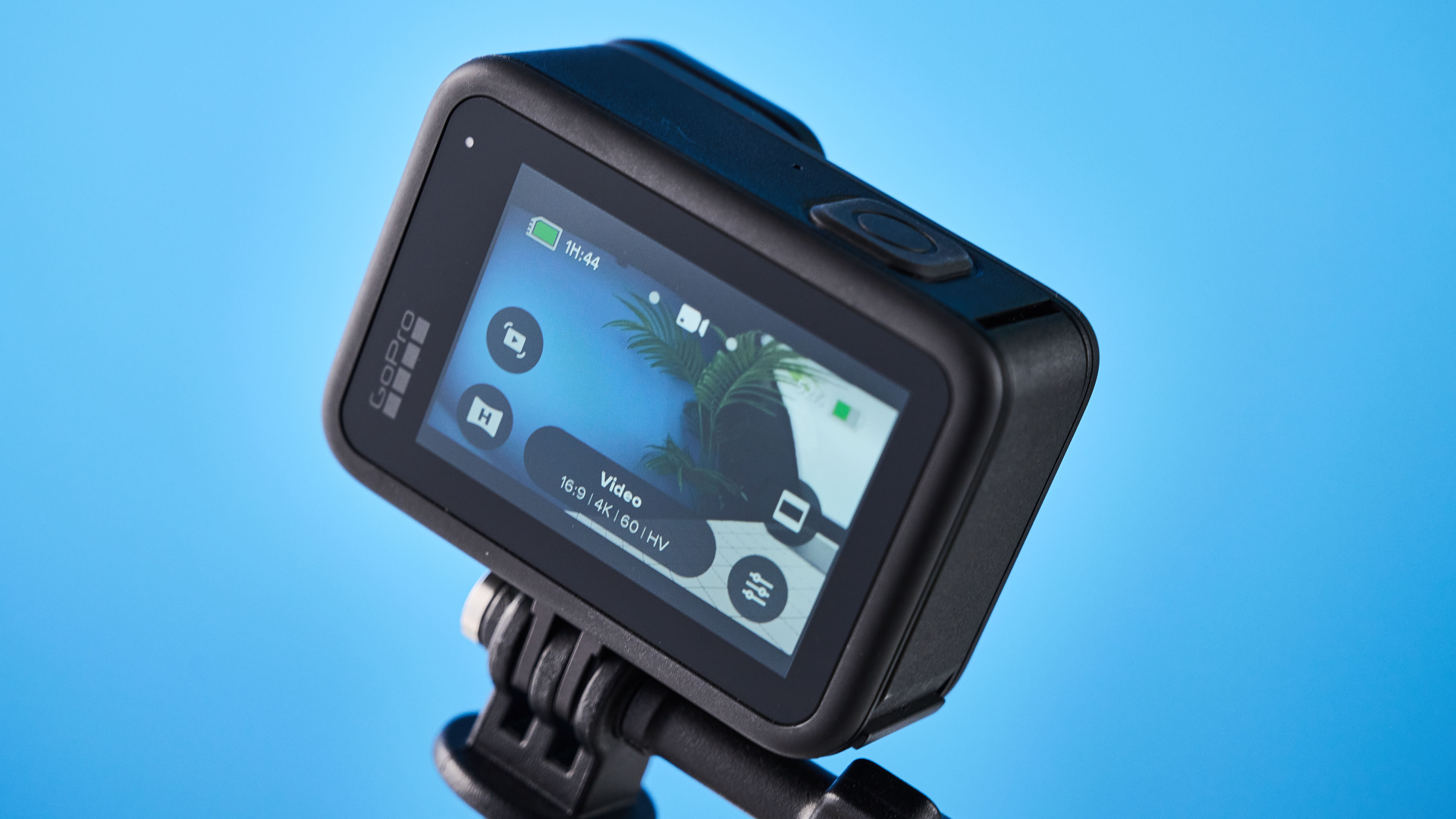
The Hero13 Black puts on a fairly respectable display audio-wise. As you can hear in the motorcycle audio capture below, shot in wind reduction mode, the camera’s internal microphone has done an acceptable job at reducing wind buffeting, and has captured some of the deeper tones of the bike’s exhaust.
It isn’t great, so if audio is important to you, it’s worth investing in a 3.5mm adapter and one of the best microphones. The DJI Osmo Action 5 Pro features better internal mics (it has 3, although they’re still no substitute for an external setup), as well as wireless hookup to DJI’s fantastic mics like the DJI Mic 2.
One feature I love on the GoPro, though, is its raw audio recording, which will store a raw .wav audio track alongside video, allowing you to edit audio separately and providing higher resolution files for more flexibility in post.
GoPro Hero13 Black review: Smartphone app
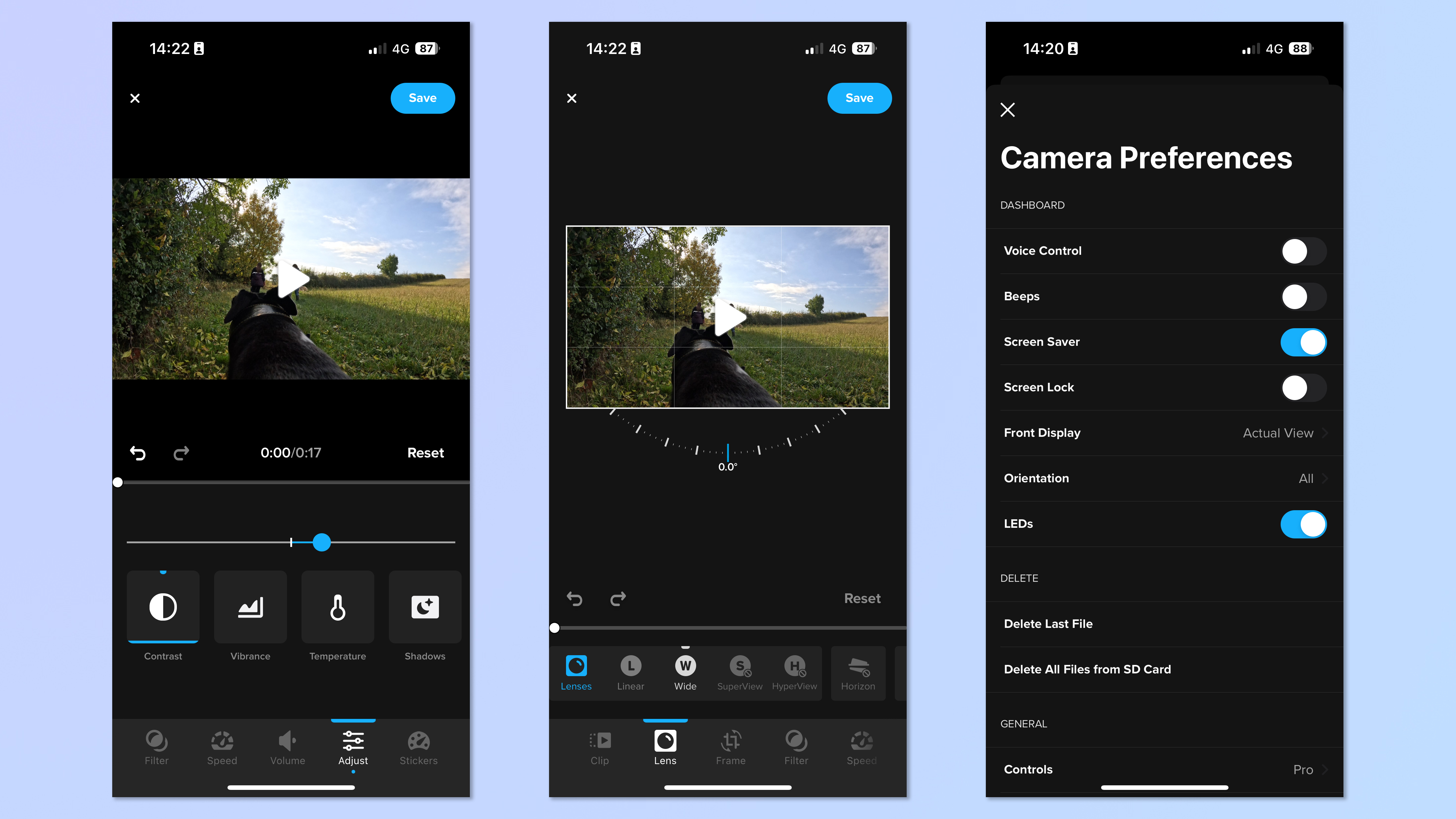
The GoPro Quik app is pretty good. It’s free, straightforward to set up and start using, and reliable in use. It makes wireless hook up easy, for updating firmware, remote control and file transfers. In terms of shooting aids and manual controls, the Quik app doesn’t offer anything that isn’t already possible in camera, unlike the DJI Mimo and Insta360 apps, for example, which allow you to choose from extra color profiles.
The Quik app also offers a decent array of editing features, including trimming, filters and exposure controls. There’s a gimmicky auto-editing feature, too, which automatically applies music and themes, and could be handy for quick social media content.
GoPro Hero13 Black review: Battery life
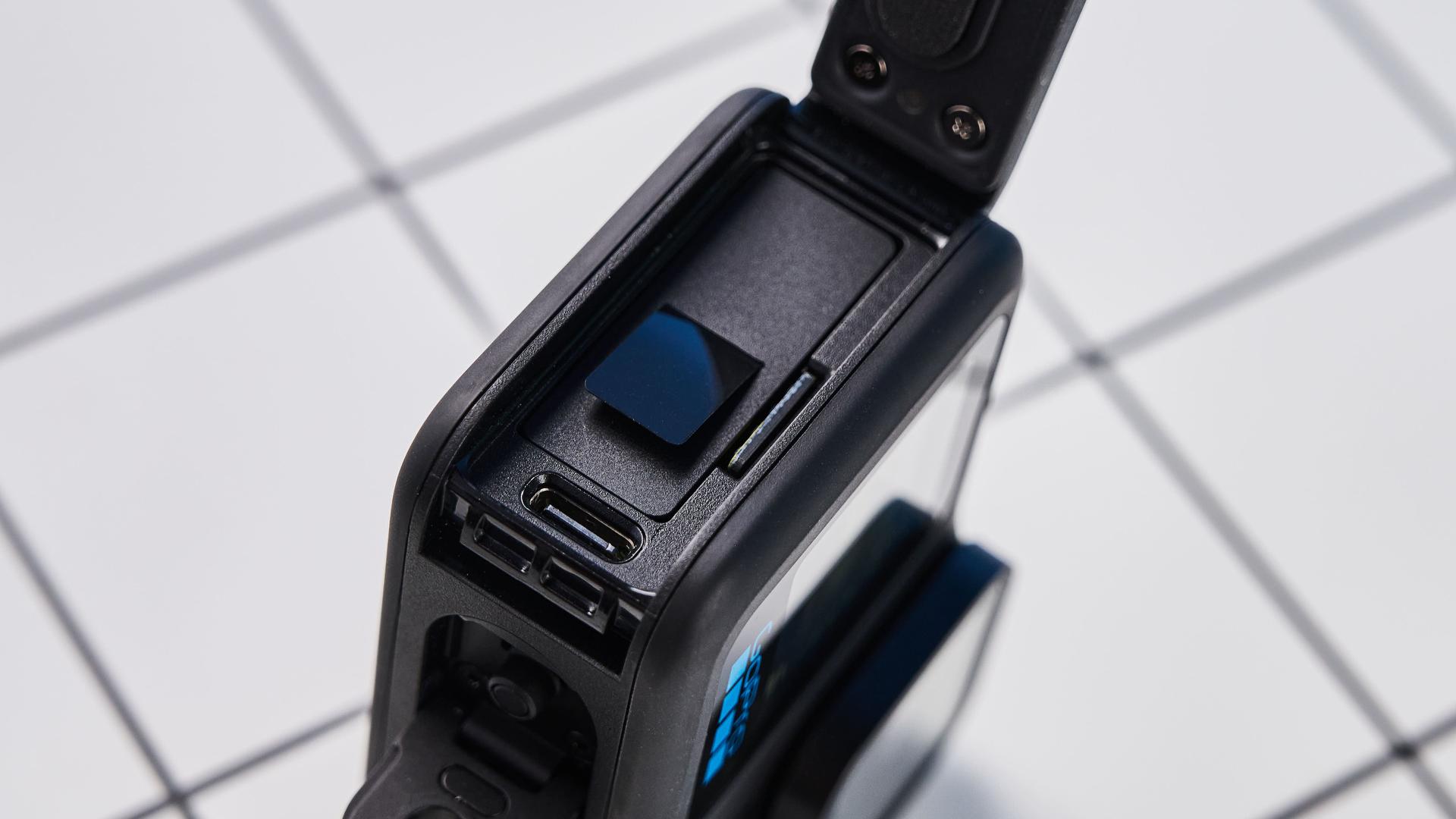
GoPro has fitted the Hero13 Black with an upgraded battery, up from 1,720mAh to 1,900mAh. This new power cell means that your old batteries from previous generations of Hero Black cameras won't work in the Hero13 Black.
In my standardized 4K/60p indoors action camera battery testing, the GoPro Hero13 Black managed 80 minutes before dying. That's pretty good, and an improvement over previous generations. However, it isn't as good as the 1,950mAh cell in the OA5 Pro, which achieved 112 minutes in the same test.
This test, being indoors, naturally stress tests camera thermals. The Hero13 Black overheated after 54 minutes, which is 11 minutes longer than the OA5 Pro. In reality, you'll rarely be shooting statically with these cameras indoors for that long, so it isn't a huge issue, but proves that the GoPro boasts better thermal management. That said, you won't want to touch the GoPro after such a run — the body was extremely hot to the touch, especially the metal fork mounts at the base.
I haven't yet tested the Insta360 Ace Pro's 1,800mAh cell or its overheating times, but will update this section when I have.
GoPro Hero13 Black review: How does it compare?
GoPro Hero13 Black review: Verdict

The GoPro Hero13 Black is a great camera, but GoPro no longer has the lead it once had over its rivals, and that margin has been cut to its thinnest ever point with the latest crop of flagships from Insta360 and, in particular, DJI. In fact, GoPro’s headroom has been cut so much that the Hero13 Black is only a recommendation of mine with caveats.
For most people, including casual creators, vloggers or those for whom waterporoofing is paramount, the Osmo Action 5 Pro is a better buy. It offers a wireless external mic hookup, better internal audio and waterproofing, plus subject detection for vlogging, all for $50 less. 4K max res is fine for most, and DJI has worked hard to fix the stabilization and app issues that previously put the Osmo Action line on the back foot versus GoPro.
If, though, you’re shooting seriously with your action camera — hardcore content creators or pros needing a rugged b-cam, for example — the GoPro will be worth the $50 extra. The extra resolution of 5.3K allows for oversampled 4K, and the new lens mods will provide plenty of creative flexibility. Of course, the GoPro bells and whistles, including epic stabilization and Timelapse modes, are a real sweetener, too. Like I said earlier, the Hero13 Black is a great camera, it’s just that in this rematch, the challengers have finally managed to grind out a draw.







